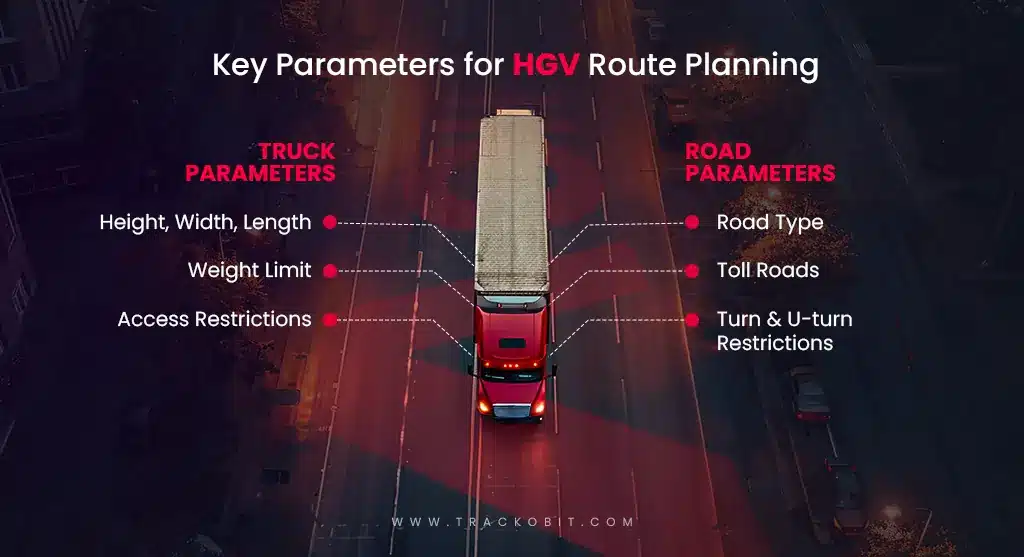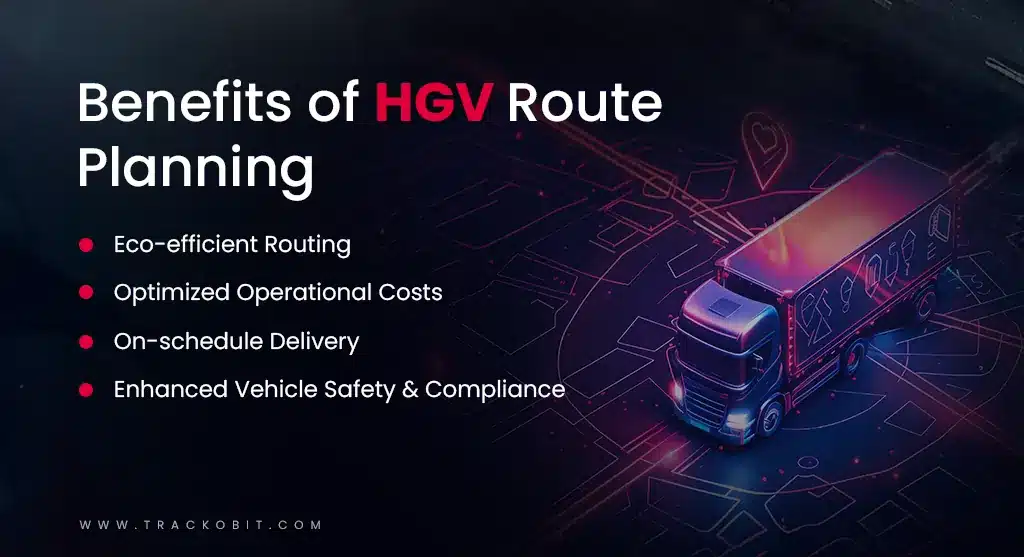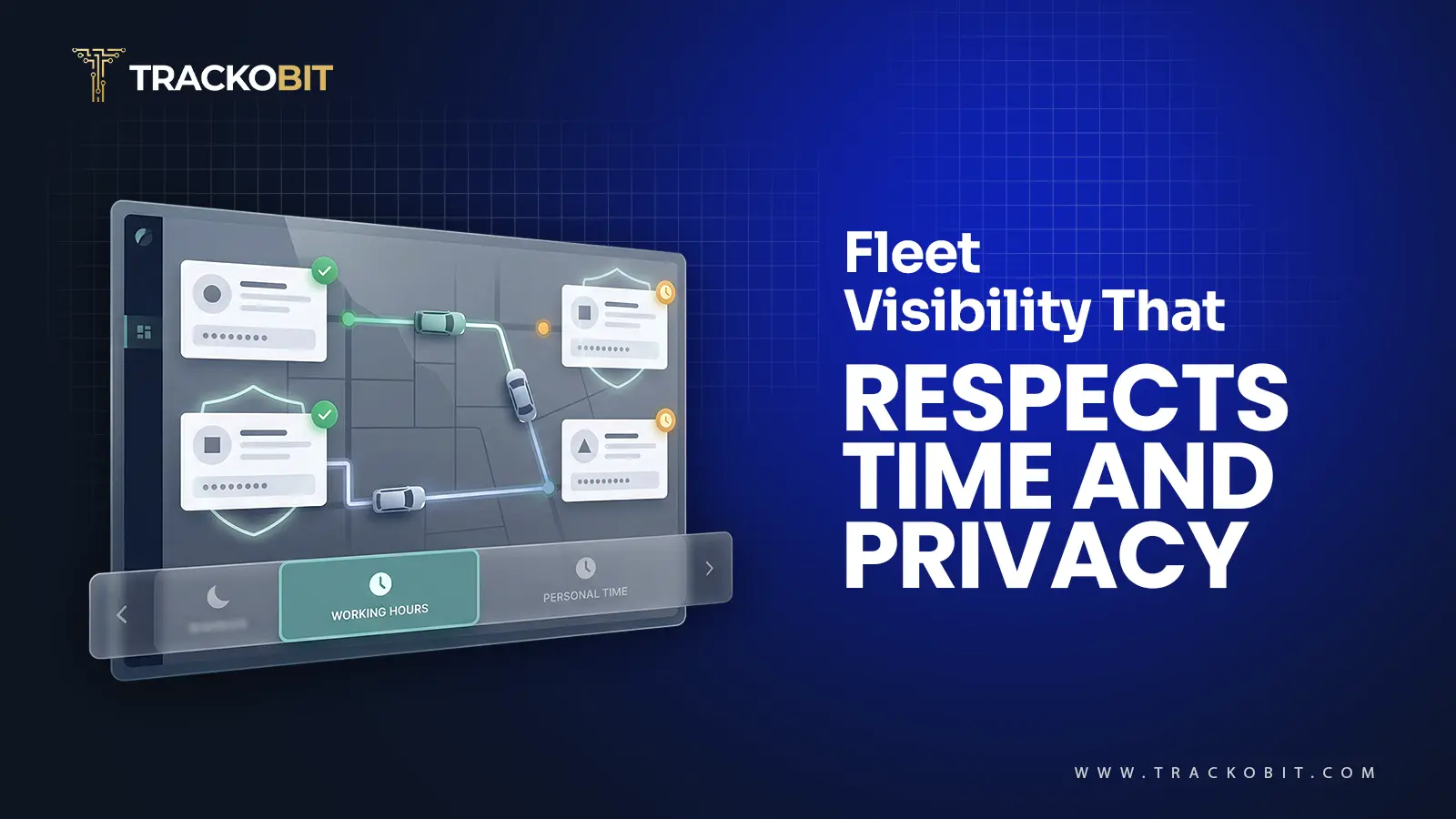-
TrackoBit
Manage commercial vehicles with the new-age Fleet Management Software
TrackoBit -
TrackoField
Streamline your scattered workforce with Field Force Management Software
TrackoField -
Features Resources
-
Blog
Carefully curated articles to update you on industrial trends. -
White Paper
Insightful papers and analysis on essential subject matters. -
Glossary
Explore an alphabetical list of relevant industry terms. -
What’s New
Get TrackoBit & TrackoField monthly updates here. -
Case Study
Explore the cases we solved with our diverse solutions. -
Comparisons
Compare platforms, features, and pricing to find your best fit.
-
About Us
Get to know TrackoBit: our team, ethos, values, and vision. -
Careers
Join the most dynamic cult of coders, creatives and changemakers. -
Tech Support
Learn about our technical support team and services in detail. -
Events
Check out the exhibitions where we left our marks and conquered. -
Contact Us
Connect with us and let us know how we can be of service.
HGV Route Planners: An Essential Guide to Smart Routing Solutions
- Author:Tithi Agarwal
- Read Time:10 min
- Published:
- Last Update: May 9, 2025
Table of Contents
Toggle
Discover why an HGV route planner is crucial for heavy-duty trucking. It optimizes routes by factoring in all regulations and parameters, ensuring safe and efficient journeys.
Table of Contents
Toggle
Heavy goods vehicles (HGVs) carry as much cargo as multiple lighter vehicles at once. And in the current scenario of driver shortages, rising fuel prices, and supply chain issues, the need to optimise and cut back on resources is evidently crucial.
However, even though using HGVs has some distinct advantages, it is only possible to reap them when a fleet manager plans the most productive routes. Using an HGV route planner simplifies this job as it plans routes that are efficient after considering multiple parameters like weight, height and more.
For this reason, we’ve put together this piece, which covers everything you need to know about route planning software for HGV, specifically why it is an essential part of productive HGV fleet management.
What is HGV?
A heavy goods vehicle (HGV) is a common term for larger commercial vehicles in the European Union (EU). They are also known as large goods vehicles and are used to transport goods and materials over long distances.
HGVs are designed to be strong and durable so they can reliably and safely carry heavy loads. They typically have large engines, heavy-duty frames, and specialized braking systems. They also often have multiple axles and large tires, which help distribute the weight of the vehicle and its cargo more evenly.
These vehicles are classified based on their weight. In general, an HGV is any truck that weighs over 7.5 metric tons (16,535 pounds) in the EU.
These types of vehicles are an essential part of the logistics and transportation infrastructure. As these vehicles are heavy-duty in built, it makes it difficult for them to handle and prone to accidental risks. The aim is to ensure that they are safe to operate on public roads and highways and are risking drivers’ and pedestrians’ lives.
What is HGV Route Planning?
The process of mapping and determining the most cost-effective path for fleet vehicle before it is dispatched is known as route planning. Several destinations are mapped out and then arranged in a time and cost-efficient manner as part of the route planning process.
Although route planning seems easy, it works differently in practice regarding heavy-duty vehicles (HGVs). HGVs are completely different from other types of traditional on-road vehicles, such as cars and vans. Fleet managers must carefully consider each driver’s unique factors while organizing trips for their drivers.
In essence, the larger the vehicle, the trickier it is for fleet managers to ensure an optimized route for delivery. Consequently, HGV route planning isn’t just a case of inputting destinations into route planning software. It implies keen judgment, real-time tracking, active supervision, and more.
Why is HGV Route Planning Important?
HGV route planning is crucial because numerous road obstacles might adversely impact optimal productivity. The essentially connected argument is that HGVs are costly to run and maintain in relation to their size. Ultimately, conditions that result in excessive idling, detouring, or wear and tear eventually translate into short—and long-term financial losses.
Naturally, roadside factors—like bad weather and traffic—often prevent individuals from getting where they need to be. However, when it comes to HGVs, the impact of these incidents is amplified since not only is a comparatively higher amount of fuel squandered, but an organisation’s profits and income is at risk.
Moreover, specific factors affect how well HGVs operate. Examples include weight-restricting bridges, tunnels and small roads that only allow smaller vehicles to use them, and laws that set hours for drivers to work to protect public health and safety. Fleet managers have the difficult task of trying to strike a balance between these important issues to deliver excellent service. Therefore, it is more appropriate to classify efficient HGV route design as a need than anything else.
What is an HGV Route Planner?
An HGV route planner is software that helps track and route heavy goods vehicles (HGVs) in real time. Plugging into existing fleet management tools, route planners provide truck drivers, dispatchers, and route planners with the functionality to create faster, more efficient, and cost-effective routes for the delivery of goods.
HGV route planners are specialized software designed to optimize the routing of heavy goods vehicles (HGVs). The primary purpose of these planners is to help fleet managers create the most efficient and cost-effective routes. They consider factors such as vehicle size, weight restrictions, road conditions, and real-time traffic. Integrating with existing fleet management systems, HGV route planners provide real-time tracking and performance data, allowing for better decision-making and maintaining operational oversight.
HGV routing software caters to the unique needs of commercial trucking, unlike standard routing solutions that cater to only general vehicle navigation. Standard route planners such as Google Maps may not take into account restrictions or challenges that affect larger vehicles, such as low bridges or weight limits. Also, these navigation tools or applications do not provide HGV truck-specific routes.
That is why you need HGV routing software that helps businesses handle multi-stop deliveries and optimize load capacities. It ensures that routes align with delivery schedules and customer time windows, making routes both efficient and safe for drivers and vehicles.
Key Features of Advanced HGV Route Planner
Here are the key features of an advanced HGV route planner according to TrackoBit’s fleet management software:
1. Vehicle-Specific Route Planning
TrackoBit’s route planner customizes routes based on vehicle specifications, like height, weight, and cargo type. It ensures routes avoid restricted areas such as low bridges, narrow streets, and weight-restricted roads. The software gives fleet managers and drivers several route choices, factoring in time, distance, and specific vehicle needs.
2. Seamless Integration with Telematics Data
TrackoBit is a telematics software that is compatible with sensors and GPS trackers. It efficiently collects and uses telematics data to continuously monitor vehicle health, driver behavior, and fuel consumption, helping optimize routes based on actual performance metrics. It integrates with fleet management systems to provide a comprehensive overview of all vehicles, making route planning more efficient and data-driven.
3. Fuel-Efficient Routing for Cost Savings
The route planning software is a must when planning and monitoring fuel minimizing routes. The software provides accurate data in the form of graphs and numbers so that the fleet manager is aware of how much fuel was consumed. Also, it has alerts that notify you whenever there is a sudden hike or decrease in fuel levels, thus identifying instances of fuel theft.
4. Geofencing and Real-Time Alerts
TrackoBit allows fleet managers to create geofences around specific areas, such as customer sites or restricted zones and automatically alerts them if vehicles enter or exit these boundaries. Notifications and alerts for route deviations, unscheduled stops, speeding, excessive idling, and other parameters enable proactive management and reduce risks.
5. Reporting and Analytics
You get detailed reports on route efficiency, fuel usage, driver performance, and vehicle health, offering actionable insights to optimize future operations, all in real-time.
6. Regulatory Compliance and Safety Features
The telematics software plans routes that comply with regulations, especially regarding vehicle weight. Moreover, the software has an ELD that strictly monitors the driver’s working hours and alerts in case of deviation from assigned routes, misconduct, and rash or careless driving. Also, the driver scorecard reflects events that occurred during the trip.
7. Driver App for Easy Navigation
TrackoBit has a mobile application for drivers, the Driver App, enabling them to access real-time route updates, alerts, and instructions and ensuring constant connectivity. All trip-related information gets shared directly over the app.
Road Parameters to Mind While Route Planning For HGV
They involve physical and regulatory specifications of the routes that HGVs will travel on.

Key Parameters for HGV Route Planning
- Tunnels and bridges: Specific vehicle height, weight, and size restrictions are often in place to ensure safe passage through these structures and help prevent accidents or damage. Proper planning helps avoid incidents and ensures overall safety.
- Road restrictions: These include various limitations such as weight, types of vehicles allowed, and ‘time of day’ restrictions. Complying with these restrictions is important for legal and safety reasons.
- Narrow roads: Large vehicles face another challenge due to their size. Ensuring that the selected routes accommodate the vehicle’s size is important. This ensures smooth navigation and avoids incidents.
- Height restrictions: Refer to the maximum allowable height for vehicles on the routes. They are vital to prevent accidents and damage. They ensure the vehicle’s height remains within limits to avoid incidents and penalties.
- Truck size restrictions: Some roads limit the size and weight of trucks allowed on them. These restrictions help trucks navigate safely, preventing delays, damage, or interruptions.
- Height, length, and width of trucks: The physical dimensions of the vehicle must be considered in route planning. Ensuring the vehicle’s size won’t be an issue for the route is important. It helps prevent issues like getting stuck in tunnels, bridges, and narrow roads.
- Vehicle type: Different types of HGVs, such as refrigerated trucks, flatbeds, and tankers, have specific requirements and limitations. The vehicle type determines its suitability for certain types of cargo and routes. Selecting the appropriate vehicle type is essential for safe and efficient transportation.
The Benefits of HGV Route Planning
So, how exactly does HGV route planning benefit fleets? Well, there is a comprehensive range of aspects which comprise enhanced efficiency & productivity, these include:
1. Lowered overall expenses
Less distance and idle time equals less fuel consumption, which is the most direct way that HGV route planning lowers a fleet’s expenses. Furthermore, less wear and tear on cars is another benefit of smoother roadways, which lowers the overall maintenance requirement. Similarly, if your drivers follow the approved route rather than veering off course, they will be less likely to encounter expensive toll costs frequently.
2. Increased health & safety
You must put your drivers’ health and safety first from all angles. This is especially true if an HGV fleet’s operations are meant to adhere to on-road laws. Breaking from established legal norms may result in dire repercussions. This makes sense since sleep deprivation is a major contributing factor to many accidents that occur while driving. With HGV route planning, you can identify the best time window for drivers to take a break from operating a vehicle. Furthermore, careful route planning will eliminate accidents on small roads and near low tunnels or bridges.

Benefits of HGV Route Planning
3. Lessened environmental impact
The severity of the current climate problem is increasing daily, and HGV fleets have a significant impact. HGV drivers may significantly improve the environment by reducing their CO2 emissions. Definitive planning will outline more sustainable routes, significantly reducing a fleet’s carbon footprint—a benefit to all of us. Shortly, the longevity of companies and fleets will probably be heavily influenced by their sustainability initiatives.
4. Improved customer satisfaction
The advantages of HGV route planning for a company’s patrons and customers are readily apparent. Deliveries consistently made without fail and on schedule establish a professional image and ensure that the clients give you positive remarks and feedback. Consistently accurate ETAs are a crucial component of high-quality delivery services; in the current era of online shopping, these are especially valued and can only be supplied with exact route plans in place.
Conclusion
The role of HGV route planners in optimising logistics will continue to grow with the evolving transportation sector. These powerful tools offer comprehensive solutions to the complex challenges faced in the heavy goods vehicle industry, making them useful for fleet managers, logistics coordinators, and dispatch managers.
However, all these advantages of HGVs can only be unlocked with the help of advanced features of HGV routing software. These include significantly enhancing operational efficiency, reducing costs, improving safety, and boosting customer satisfaction. TrackoBit allows fleet managers to plan routes that follow all the parameters of HGVs and ensures that the drivers and the operation are compliant with rules and regulations.
More Related Reads:
- How to Track Vehicles Without GPS Tracking Devices
- Top Vehicle Safety Features You Get with TrackoBit
- Cost of Fleet Management: A Detailed Analysis
FAQs on HGV Route Planners
-
What is an HGV route planner?
An HGV route planner is a tool designed to optimize routes for heavy goods vehicles. It considers road restrictions, vehicle dimensions, weight limits, and other regulations to ensure safe, efficient, and compliant journeys, helping fleet operators save time and reduce operational costs.
-
What is HGV?
HGV stands for Heavy Goods Vehicle. It refers to large trucks or lorries that transport heavy or bulky goods. HGVs are subject to specific regulations regarding weight, dimensions, and road usage to ensure road safety and compliance.
-
What are the benefits of HGV route planners?
HGV route planners enhance efficiency by optimizing routes based on road restrictions, vehicle size, and weight limits. They reduce fuel consumption, minimize delays, and ensure compliance with regulations, leading to cost savings, improved safety, and timely deliveries for fleet operators.
Tithi Agarwal is an established content marketing specialist with years of experience in Telematics and the SaaS domain. With a strong background in literature and industrial expertise in technical wr... Read More
Related Blogs
-

When Tracking Needs a Clock: Rethinking Fleet Visibility
Tithi Agarwal December 24, 2025Read on to understand why fleet tracking works better when it follows working hours. Because visibility should support operations, not…
-

What Makes TrackoBit’s Video Telematics Software Truly Next-Gen?
Shemanti Ghosh December 17, 2025TrackoBit’s video telematics software blends smart video intelligence with full server control. The result? Superior fleet reliability and safety.
-

Plug, Pair, Perform TrackoBit Introduces BLE Sensor Integration
Tithi Agarwal November 26, 2025TrackoBit’s BLE Sensor Integration enables wireless, real-time monitoring with faster installs and accurate insights. It improves fleet efficiency, visibility, and…
-

How to Use Driver Behavior Reports as a Sales Hook to Close Big Fleets
Tithi Agarwal October 16, 2025TrackoBit’s driver behavior reports empower fleet providers to win big contracts by showcasing safety, efficiency, and measurable ROI.

Subscribe for weekly tips to optimize your fleet’s potential!
Your inbox awaits a welcome email. Stay tuned for the latest blog updates & expert insights.
"While you're here, dive into some more reads or grab quick bites from our social platforms!"Stay Updated on tech, telematics and mobility. Don't miss out on the latest in the industry.
We use cookies to enhance and personalize your browsing experience. By continuing to use our website, you agree to our Privacy Policy.




































